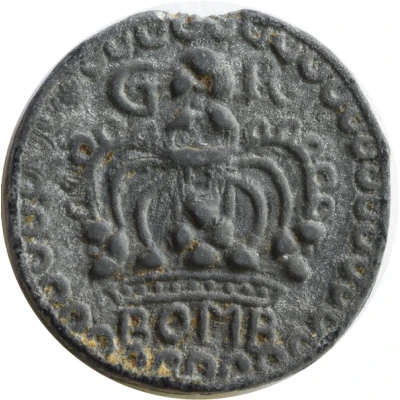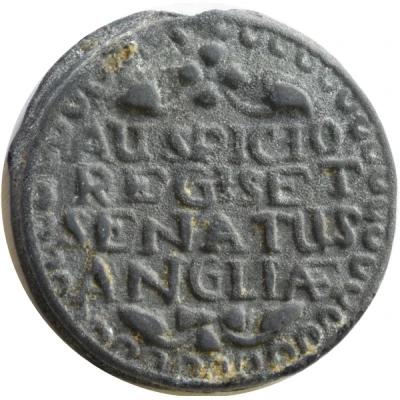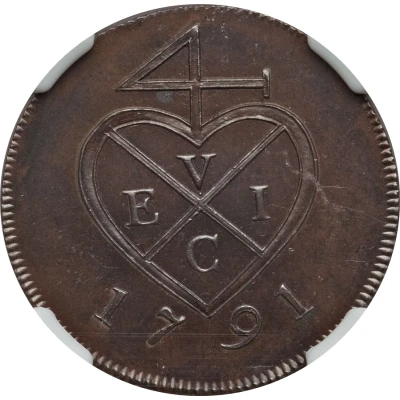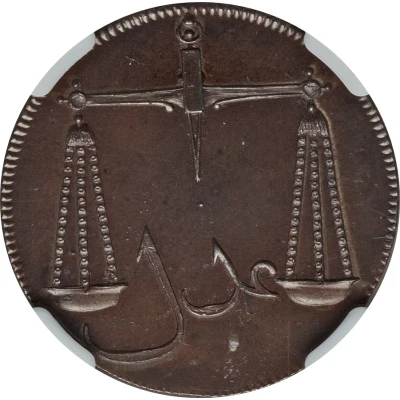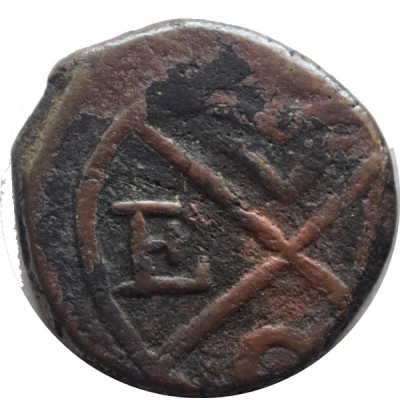
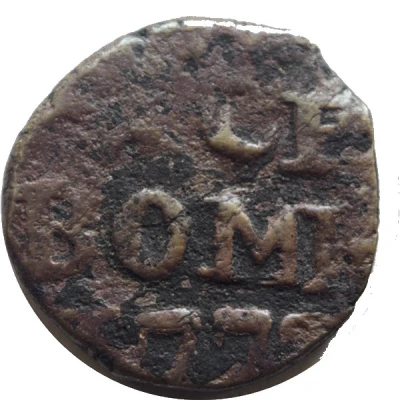

© Joseph Kunnappally
1 Pice
| Copper | 5.13 g | 18 mm |
| Issuer | Bombay Presidency (British India) |
|---|---|
| Type | Standard circulation coin |
| Years | 1773-1788 |
| Value | 1 Paisa (1⁄64) |
| Currency | Rupee (1672-1835) |
| Composition | Copper |
| Weight | 5.13 g |
| Diameter | 18 mm |
| Shape | Round |
| Demonetized | Yes |
| Updated | 2024-10-05 |
| Numista | N#71593 |
|---|---|
| Rarity index | 95% |
Reverse
English legend (partly off flan including much of date): (1) /PICE / BOMB / 1773 in 4 lines
Lettering:
(1)
PICE
BOMB
1773
Translation: 1 Pice Bombay 1773
Edge
Plain
Comment
- Weight varies 4.79 - 5.13 grams- Diameter varies 17.1-19.0 mm
- Bombay mint
- During the 18th century fluctuations in the market value of copper saw regular changes in the metal used for small denomination coins between copper and tin. In 1773 an attempt was made by the EIC to vary its exchange rate for the tin Pice from 80 to 100 to the silver rupee. On 5 October 1773 complaints resulting from this attempt led to the decision that the tin issues be abandoned and a new copper Pice be produced. The new coins were declared legal tender from 1 November 1773 at the rate of 100 to the Rupee and a proclamation was issued which included withdrawal of the old tin pieces which would be accepted at the Treasury at the rate of 100 to the rupee and with a warning that any tin pieces brought in that were local copies and not true EIC tin coins would be "cut in two and forfeited to the Company". Pridmore's comment on this issue "as a series they are a wretched issue" is born out by this example. Pridmore also notes that this issue was widely forged and suggests that any bearing dates other than 1773 might be considered as such. He records the following dates for the 1 Pice: 1773, 1783, 1784 and 1788 with the comment "Forgery?" after the last three.
Another example... and a drawing of the complete reverse
Interesting fact
One interesting fact about the 1 Pice coin from Bombay Presidency (British India) made of Copper is that it was used as a currency in India during the 18th century, and it was equivalent to 1/64 of a Rupee.
